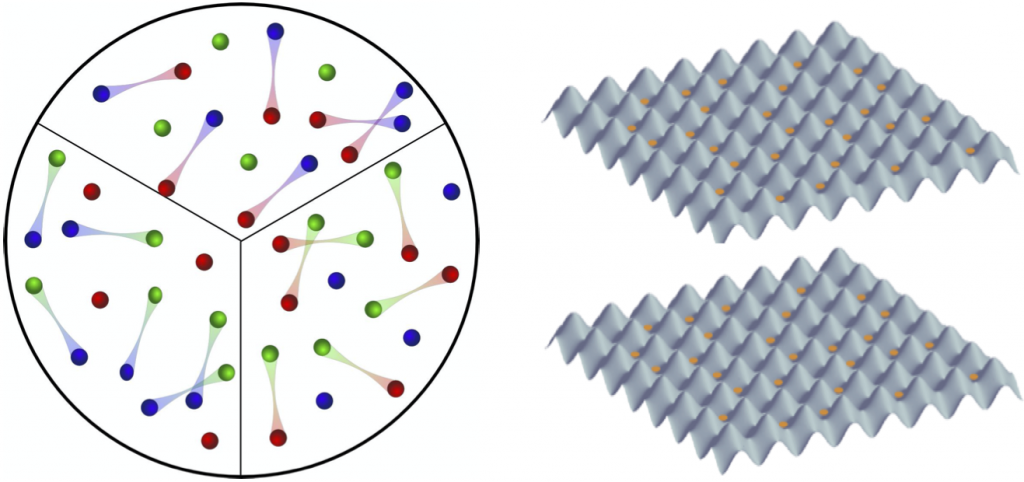Understanding many phenomena we find in nature often relies on understanding the behaviour of the microscopic particles making up the things we want to describe. Examples of this range in scale from the behaviour of electrons in conductors, insulators and semiconductors to the properties of white dwarf stars. In many cases, this behaviour is described by quantum mechanics, and becomes very difficult to describe in a way where we can do calculations on a classical computer. In particular, for strongly interacting many-particle systems in quantum mechanics, this can require the storage of a number of parameters that grows exponentially with the size of the system. This has made modelling of complex materials such as high-temperature superconductors (where electrons can flow without resistance in materials at temperatures a little below room-temperature) very difficult, or in some cases essentially impossible.
A new way around this problem is to find a highly-controllable quantum system that we understand well on a microscopic level, and then use this system to model the properties of the system that we don’t understand well. This can either be done by constructing a quantum computer to compute the properties of the other system (which is called digital quantum simulation ) or by manipulating properties of the controllable system to that it directly resembles the system you would like to study (which is called analogue quantum simulation).
Over the last ten years a strong focus has been placed on using the level of control and microscopic understanding in atomic physics systems to study strongly correlated lattice and spin systems, as appear in modern solid state physics. These are now being used to explore new areas of many-body physics, and to start to approach problems in materials science, or mathematical problems from outside of physics that can be mapped onto the dynamics of these systems.
We are helping to benchmark and develop applications for these devices, as part of projects including:
- Designing out of equilibrium many-body quantum systems — DesOEQ
- Programable atomic large-scale quantum simulation — PASQuanS
- UK Quantum Technology Hub in Computing and Simulation — QCS Hub
Recent publications:
- Rosaria Lena, Andrew Daley, Dissipative dynamics and cooling rates of trapped impurity atoms immersed in a reservoir gas, Phys. Rev. A 101, 033612 (2020).
- Ellen Derbyshire, Jorge Yago Malo, Andrew Daley, Elham Kashefi, Petros Wallden, Randomized Benchmarking in the Analogue Setting, Quantum Science and Technology 5, 034001 (2020)
- Anton S. Buyskikh, Luca Tagliacozzo, Dirk Schuricht, Chris A. Hooley, David Pekker, Andrew J. Daley, Spin-models, dynamics and criticality with atoms in tilted optical superlattices, Phys. Rev. Lett. 123 (2019).
- Kantian, S. Langer, and A. J. Daley, Dynamical disentangling and cooling of atoms in bilayer optical lattices, Phys. Rev. Lett. 120, 060401 (2018)
